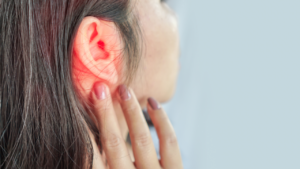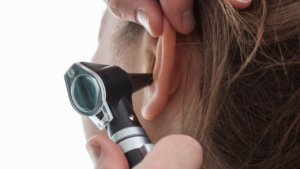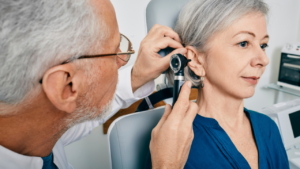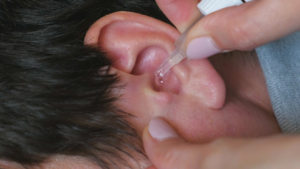
Have you ever wondered about the effectiveness and safety of using ear candles? In this article, we will explore what ear candles are, how they work, and the claims surrounding them. We will also discuss the potential risks associated with using ear candles, as well as what research says about their efficacy. We will provide some alternative methods for ear care that may be safer and more effective. So, are ear candles the answer to your ear care needs, or are there better alternatives out there? Let’s find out.
Key Takeaways:
- Ear candles do not have any proven benefits and may even cause harm.
- Claims of removing earwax, improving hearing, and relieving sinus pressure have no scientific basis.
- There are safer alternatives for treating earwax and ear-related issues, such as ear drops and professional ear candling.
What Are Ear Candles?
Ear candles, also known as ear cones or Hopi ear candles, are hollow tubes made of beeswax or paraffin that are used in alternative ear health practices.
Historically, ear candles have been utilised in various cultures for centuries to cleanse the ears and promote general well-being. The practice of ear candling is believed to have originated from ancient Egyptian, Chinese, and Native American traditions.
In contemporary times, ear candles are often used as a natural remedy by individuals seeking relief from earwax build-up or mild ear discomfort. Before use, it is recommended to consult with an ear health specialist to ensure that the process is done correctly and safely.
How Do Ear Candles Work?
The concept behind ear candles involves creating a vacuum with gentle heat, promoting circulation and potentially aiding in the removal of ear wax, a practice with historical roots in civilizations like the Native Americans, Greeks, Romans, and Egyptians.
Ear candles work through a simple yet effective process. When the ear candle is lit, the heat produces a gentle suction that helps to draw out impurities and soften the ear wax. This warming effect can stimulate blood flow in the ear canal, promoting better circulation and potentially aiding in clearing any blockages.
This method aligns with the ancient beliefs of various cultures, where heat was seen as a therapeutic element. The vibrations and warmth created by the burning candle can create a soothing effect within the ear, echoing the holistic approaches to well-being found in ancient societies.
What Are the Claims About Ear Candles?
Claims about ear candles include anecdotal evidence of relieving sinus pressure, creating a spa-like experience in salons, and offering an alternative approach to ear health, drawing inspiration from traditional Native American practices.
Despite the lack of scientific backing, some people believe that the warmth generated by the burning candle can soften earwax and draw it out through a chimney effect. While ear candling has been used in some spa and salon settings as a relaxation treatment, it’s essential to remember that it may not be suitable for everyone.
Culturally, ear candling can be traced back to ancient civilizations beyond Native American traditions, with mentions in Egyptian, Chinese, and Greek cultures.
Removes Earwax
One of the primary claims about ear candles is their ability to remove earwax build-up through a suction process, seen as an alternative to traditional methods like ear drops or syringing.
When a lit ear candle is placed in the ear canal, the heat creates a gentle vacuum that supposedly draws out earwax and impurities. Scientific studies have questioned the effectiveness of this method, with some even suggesting that the residue found in the candle after usage is simply from the candle itself and not earwax. Comparing this to conventional methods, such as ear drops that soften the wax or syringing that flushes it out, the efficacy of ear candles becomes even more debatable.
Improves Hearing
Advocates suggest that ear candles can improve hearing by addressing issues like hearing loss and utilising gentle vibrations, although this claim lacks scientific backing recognized by experts in the field, including those at institutions like Mass. Eye and Ear and bioscience researchers.
Ear candles have been marketed as a natural solution for various ear-related problems, with proponents claiming that they can help clear out earwax and improve overall hearing ability. The theory behind how ear candles work revolves around the idea that the heat from the burning candle creates a vacuum, which in turn supposedly draws out impurities and improves circulation in the ear canal.
Health professionals and researchers have expressed skepticism about these claims, stating that there is no scientific evidence to support the purported benefits.
Relieves Sinus Pressure
Another claim regarding ear candles is their ability to relieve sinus pressure by enhancing circulation in the nasal passages, a benefit often promoted by practitioners in London, such as those affiliated with ENT UK.
Enhanced circulation within the sinuses and nasal passages is believed to help reduce congestion and alleviate symptoms associated with sinus pressure. This improved blood flow is thought to promote the drainage of mucus and enhance the body’s natural ability to clear blockages within the sinuses, leading to a sense of relief and comfort.
Professionals within the medical community in London, including those linked with organisations like ENT UK, have expressed support for techniques that stimulate sinus health through improved circulation, acknowledging the potential benefits for individuals seeking alternative methods to address sinus-related issues.
What Are the Risks of Using Ear Candles?
Despite their perceived benefits, using ear candles carries inherent risks such as burns, injuries, and the potential for ear wax to be pushed deeper into the ear canal, a concern acknowledged by regulatory bodies like the FDA.
When inserting ear candles into the ear canal, there is a significant risk of burns due to the hot wax dripping from the candle. The injuries could range from minor skin burns to more severe cases where the delicate tissues inside the ear are damaged, leading to hearing problems or infections.
Studies have shown that the process of using ear candles can sometimes cause the ear wax to be pushed further down the ear canal rather than removing it. This can result in blockages, hearing loss, or even complications such as perforation of the eardrum.
Regulatory bodies like the FDA have issued warnings about the lack of scientific evidence supporting the effectiveness of ear candles and have cautioned against their use due to the safety concerns associated with these products. It’s essential for consumers to be aware of these risks and consult medical professionals for safe ear wax removal methods.
Burns and Injuries
One significant risk of using ear candles is the potential for burns and injuries, particularly when the cotton end ignites during the procedure, a danger recognised even in the traditional practices of Native American tribes like the Hopi.
When the candle is lit, it creates a vacuum that supposedly draws out earwax and impurities. If the candle is not placed correctly or if the burning cotton droplets fall onto the skin or hair, it can lead to severe burns or injuries.
Flammability of the cotton end is a critical factor as it can easily catch fire when in contact with hair or skin, posing a significant risk of accidents and injuries, making the process potentially hazardous. In fact, incidents of burns from ear candling have been reported due to ignition of the cotton or dripping wax.
Ear Canal Obstruction
Using ear candles can lead to the risk of ear canal obstruction if wax or candle residue is not completely removed, a concern that underscores the importance of proper suction and post-procedure care supported by bioscience findings.
When the ear candle burns, it creates suction, theoretically pulling out impurities. If the process is not done correctly, it can result in residual wax or debris being deposited in the ear canal, potentially leading to blockages. This can be particularly risky as excessive buildup could affect hearing and potentially cause infections. Therefore, it is crucial to ensure thorough removal of any residue and employ effective suction techniques. Research has also highlighted the significance of follow-up care to monitor for any signs of blockages and take timely action to prevent any complications.
Ear Infections
The use of ear candles may increase the risk of ear infections and dizziness due to improper technique or the introduction of foreign substances into the ear canal, a concern highlighted by the FDA regarding the safety of such alternative practices.
Inserting an ear candle into the ear canal can melt the wax, creating a vacuum effect which proponents claim removes impurities. There is a significant risk of burns, perforation of the eardrum, and exacerbation of existing ear issues. Earwax is a natural substance that the body produces to protect the ear canal from foreign particles and infections. Disrupting this process can lead to complications and further ear problems, which is a critical point emphasized by regulatory agencies like the FDA.
What Does Research Say About Ear Candles?
Scientific research on ear candles has not provided conclusive evidence to support their efficacy or safety, leading experts and regulatory bodies like the FDA to caution against their use due to the lack of validated scientific data.
Despite the widespread popularity of ear candles in alternative medicine practices, studies have consistently failed to demonstrate their effectiveness in removing wax buildup or improving hearing. The lack of scientific evidence supporting the claimed benefits of ear candling has raised concerns among healthcare professionals, who warn against the potential risks associated with inserting a burning candle into the ear canal.
The U.S. Food and Drug Administration (FDA) has issued warnings against the use of ear candles, highlighting the possible dangers of burns, injury, and even ear canal obstructions that could result from the procedure. These regulatory actions are based on a critical evaluation of the available research, which indicates that ear candling may be more harmful than helpful.
No Scientific Evidence
The prevailing consensus in the scientific community is that there is a lack of empirical evidence supporting the claims made about ear candles, especially concerning their impact on hearing loss, a stance reinforced by bioscience research findings.
Advocates of ear candles suggest that they can help remove earwax and improve hearing by creating a vacuum effect. Scientists argue that this method may do more harm than good, as there is no proven mechanism for the candles to draw out impurities from the ear canal.
Studies have shown that ear candling can actually deposit wax residues into the ear, leading to potential blockages and irritation. The scientific community emphasises the necessity of relying on evidence-based practices for addressing hearing issues, urging individuals to seek guidance from qualified healthcare providers.
Potential Dangers Outweigh Benefits
Experts caution that the potential risks associated with ear candles, such as burns, injuries, and ear canal damage, outweigh the perceived benefits, prompting regulatory bodies like the FDA to issue warnings against their usage.
Proponents of ear candling argue that it can remove wax and toxins and improve hearing, but the lack of scientific evidence supporting these claims has raised concerns. The FDA emphasizes that the temperature of the burning candle can lead to serious injuries, and the American Academy of Otolaryngology strongly advises against using ear candles due to the risk of harm.
What Are Some Alternatives to Ear Candles?
In the realm of ear health, there exist several alternatives to ear candles, such as ear drops, ear irrigation procedures, seeking guidance from medical experts, or consulting with doctors for specialised care.
Ear drops can be a convenient option for maintaining ear health, as they are easy to use and can help soften earwax for easier removal. Ear irrigation methods, like using a bulb syringe or specialised ear irrigation kits, provide a gentle way to cleanse the ears and remove excess wax.
For more comprehensive care, individuals can opt for professional consultations with audiologists or ENT specialists, who can conduct thorough examinations, offer personalised treatment plans, and address any underlying ear issues. These healthcare professionals can also perform ear wax removal procedures using safe and effective techniques.
Ear Drops
Ear drops are a common non-invasive alternative to ear candles, often recommended for home use in maintaining ear health, with guidance available from medical experts and healthcare professionals.
One of the key benefits of using ear drops is their gentle and non-invasive nature, making them suitable for individuals looking for a simple and effective way to care for their ears at home. These drops are specifically formulated to help with common issues like earwax build-up, dryness, or mild infections.
Importantly, it is crucial to follow the instructions provided by healthcare providers or pharmacists when using ear drops to ensure safety and effectiveness. While ear candles have also been used for ear care, experts typically recommend ear drops due to their precision and controlled application process.
Ear Irrigation
Ear irrigation procedures offer a safe and effective method for removing excess ear wax and maintaining ear health, supported by expert advice and findings from bioscience research.
Through the gentle flushing of the ear canal with warm water, ear irrigation helps dislodge stubborn earwax that may cause hearing difficulties or discomfort. Unlike ear candles, ear irrigation is a controlled procedure conducted by healthcare professionals like ENT specialists or trained clinicians, minimising the risk of accidental burns or injuries. This method ensures a thorough cleaning of the ear canal, reducing the chances of infections or blockages that can lead to more serious complications over time.
Ear Candling by a Professional
For individuals seeking ear candling services, opting for procedures conducted by trained professionals or ear specialists, including those endorsed by healthcare organisations like the NHS, can ensure safe and regulated practices.
Ear candling, also known as thermal-auricular therapy, involves the use of hollow candles made of fabric coated in paraffin or beeswax, which are placed in the ear canal and lit on the other end to create a vacuum effect. This technique aims to remove excess earwax and impurities by drawing them into the candle. While some people find this method useful for maintaining ear hygiene, it is crucial to seek professional services to avoid risks and ensure effectiveness.
Trained specialists have the expertise to perform ear candling safely, avoiding potential complications such as burns, ear injuries, or further wax blockages. These professionals follow healthcare standards and guidelines set by reputable institutions, emphasising the importance of hygiene, sterilisation, and patient safety throughout the procedure. Affiliation with recognised healthcare organisations like the NHS can provide additional assurance of the practitioner’s proficiency and commitment to maintaining high standards of care.
Consultation with a Doctor
When facing complex ear health issues or concerns, scheduling a consultation with ear doctors or ENT specialists is crucial to receive accurate diagnoses, personalised recommendations, and evidence-based treatments supported by bioscience research.
Consulting with medical professionals specialising in ear health can provide individuals with a comprehensive understanding of their condition and the most effective strategies for management. By seeking expert opinions from ear doctors, patients can benefit from tailored treatment plans that prioritise their well-being and long-term ear health.
Ear specialists are equipped with the knowledge and experience to address a wide range of ear-related issues, from common ear infections to more complex conditions such as hearing loss or tinnitus. Their expertise in diagnosing and treating ear ailments ensures that patients receive the most appropriate care for their specific needs.






